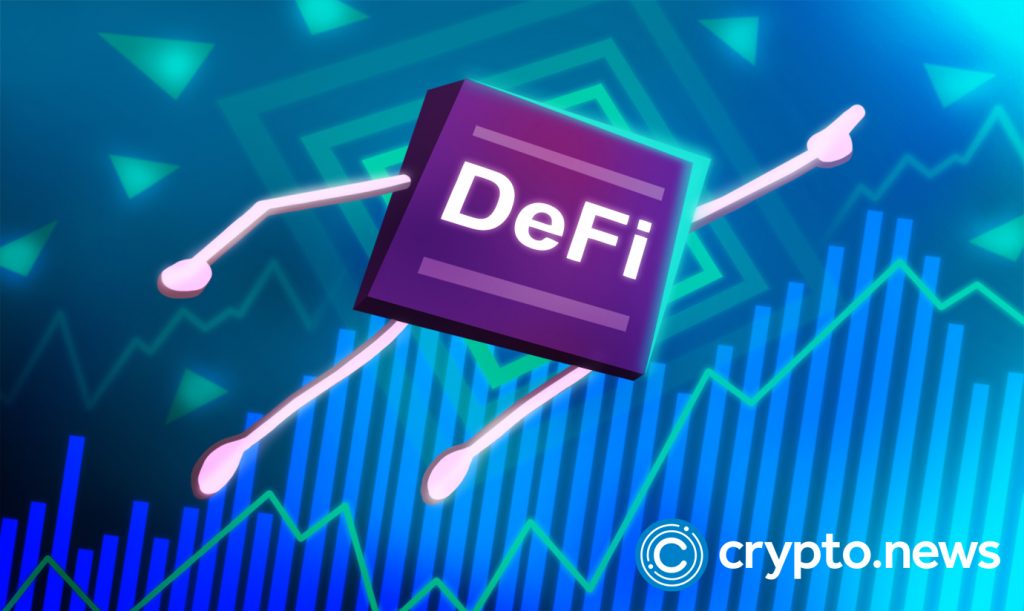
Cryptocurrencies are fast emerging as an alternative to traditional finance ecosystems. This market has given rise to a decentralized economy, popularly known as Decentralized Finance (DeFi). According to DeFi LLama metrics, there is currently over $220 billion locked in various DeFi protocols – a figure that was barely $1 billion at the onset of 2020.
So, what can we expect from this nascent ecosystem as the year unfolds? Well, a lot can happen given the rate at which DeFi innovations are taking place. Contrary to the speculation narrative, the market stakeholders have shifted to more fundamental and user-oriented products that can support mainstream adoption.
It is also noteworthy that most of the upcoming DeFi projects are pitching camp on alternative Layer-1 chains, including the likes of Cardano, Solana and Avalanche. On the other hand, we have innovations that are going the extra mile to create their own Layer-1 smart contract networks.
With so much to anticipate, let’s take a deep dive into some of DeFi innovations whose value proposition could attract significant traction in 2022.
- DeFiChain
DeFiChain is a decentralized blockchain ecosystem designed to enable a seamless diversification of crypto investments. This Proof-of-Stake (PoS) network is a fork of the Bitcoin blockchain, leveraging custom DeFi transactions (DfTx) that allow users to access opportunities such as liquidity mining, staking, decentralized stocks and loans.
Like most DeFi markets, the DeFiChain ecosystem is powered by a native token $DFI, which is currently available on centralized exchanges such as Bittrex, KuCoin and DFX. To access the platform, one has to send $DFI tokens to their DeFiChain wallet. Alternatively, users can also deposit other crypto assets such as BTC and ETH via CakeDeFi.
While the project is still in its early growth stages, DeFiChain enjoys over $2 billion in total value locked (TVL). The $DFI token has also risen by over 40% within the past year to trade at $4.5 as of press time. This upward trajectory can be attributed to DeFiChain’s Fort Canning upgrade that set the stage for minting decentralized assets.
- Manta Network
Manta is a privacy-focused company focused on ensuring the future of privacy in a Web3 world. This platform leverages the Zk-SNARK (Zero-Knowledge Succinct Non-Interactive Argument of Knowledge), which allows peer-transacting parties to confirm receipt of information without revealing their identities.
Designed as an interoperable DeFi ecosystem, Manta Network features a decentralized anonymous payment (DAP) protocol (MantaPay) and decentralized anonymous exchange (DAX) protocol (MantaSwap). These two protocols provide DeFi users on Polkadot and other compatible Layer-1 chains with an opportunity to transfer or swap crypto tokens anonymously.
Notably, the project has received support from prominent crypto VCs, raising $5.5 million back in October 2021. This particular funding round was led by ParaFi Capital and CoinFund, alongside other Web 3.0 investors such as Consenys and Digital Currency Group. Given the importance of privacy in the new DeFi paradigm, Manta Network is one of the innovations to watch in 2022.
- Ardana
Ardana is the pioneer stablecoin hub of the Cardano blockchain ecosystem. This smart contract platform enhances liquidity by enabling DeFi users on Cardano to mint dUSD (Ardana’s dollar-pegged stablecoin) with ADA tokens as collateral.
“As the first all-in-one stablecoin ecosystem built on Cardano, our platform provides users with convenient access to liquidity, an ever-present concern in the hyper-competitive defi world.” previously noted Ardana’s CEO and Co-founder Ryan Matovu.
Besides minting dUSD, the Ardana ecosystem features a decentralized exchange (DEX) dubbed Danaswap. This DEX allows users to swap Cardano-native tokens, alongside an interest-earning feature for dUSD deposits. The ecosystem also includes a governance token ‘DANA’, which enables Ardana users to vote on the platform’s development.
Though built on the Cardano blockchain, Ardana is scaling its ecosystem through a bridging solution to NEAR and other Layer-1 chains. This means that users can transfer assets from Cardano and vice versa. Even better, DeFi users looking to leverage Cardano’s throughput and scalability can now mint dUSD stablecoins within a few clicks.
- HyperDex
HyperDex simplifies DeFi asset management for both crypto veterans and newbies. This platform reduces the risk on DeFi investments through decentralized and automated products (cube financial instruments). They include fixed income, algo trading, race trading and modular cube investments.
All these HyperDex cubes carry a different level of risk, allowing investors to choose depending on their appetite and ability. The fixed income cube is the least risky, it targets investors looking for a steady passive income that yields a higher return than traditional assets such as gold and interest-earning accounts.
On the other hand, algo and race trading investment cubes have been designed for more aggressive investors whose goal is to diversify or bet on future prices. The modular cube investment is the most flexible, users can leverage this cube to create customized investment strategies. Simply put, HyperDex is a one-stop platform for DeFi asset management.
Conclusion
DeFi may still be a drop in the ocean compared to the larger global financial ecosystem. However, one cannot ignore the potential of decentralized markets as we move into an era where the masses are taking back control. Going by the historical and current trajectory, DeFi projects will soon become mainstream. The fundamental ones featured in this article paint a picture of what to expect in the coming years.
